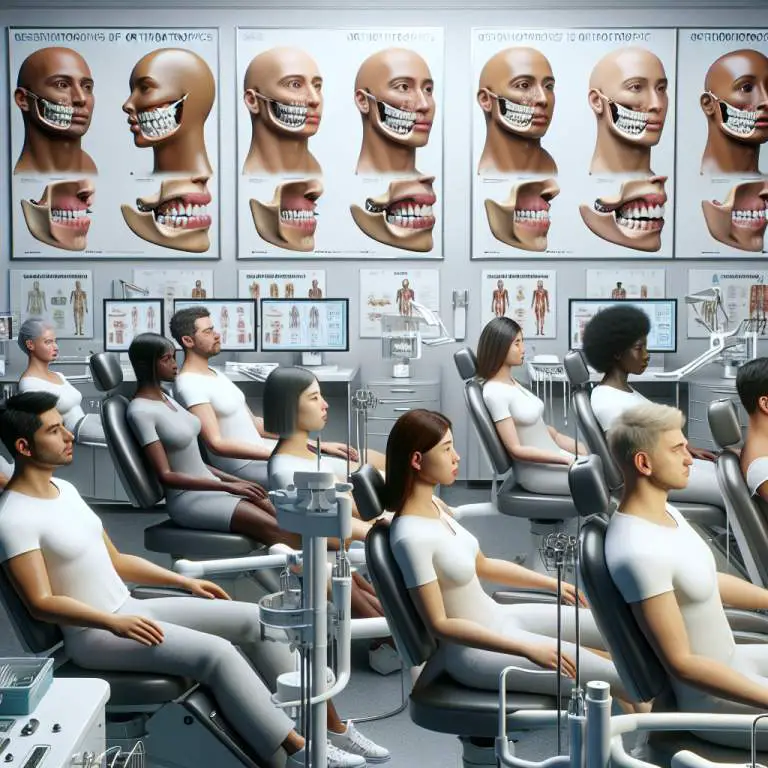What are the risks of using mewing for jawline enhancement?
Using mewing for jawline enhancement can lead to some risks, especially if done incorrectly. It might cause jaw pain or discomfort due to the constant pressure applied to change the jaw’s position. There’s also a chance of developing temporomandibular joint (TMJ) issues, which can affect how your jaw moves and feels. Lastly, without proper guidance, one might not see the desired improvements, leading to frustration and wasted effort.

How does mewing work to enhance the jawline?
Mewing is a technique that involves placing your tongue against the roof of your mouth. This position is supposed to help shape and define your jawline over time. The idea is that by doing this, you’re training the muscles in your face and neck to hold a certain position.
When you keep your tongue pressed up, it can also encourage proper breathing through your nose. This might seem small, but it’s actually a big deal for how your face looks. Over months or even years, people who stick with mewing might notice their jawlines becoming sharper and more defined.
What are the common mistakes people make when starting mewing?
A lot of folks jump into mewing without really understanding how to do it right. One big mistake is not keeping the whole tongue on the roof of the mouth. Some just press the tip up there and think that’s enough, but it’s not. You need to get as much of your tongue up there as possible for it to work.
Another mistake is forgetting about it during the day. Mewing isn’t something you do just once in a while; you have to try to keep your tongue in that position all the time. It’s easy to go back to old habits, especially when you’re busy or not thinking about it.
Can mewing cause any temporary discomfort or pain?
Yes, when you start mewing, you might feel some weirdness or even a bit of soreness in your jaw and face muscles. That’s because these muscles aren’t used to being used this way. It’s like when you start exercising parts of your body that haven’t been active for a while.
This discomfort should go away after a little while as your muscles get stronger and more used to their new job. But if the pain gets really bad or doesn’t go away, that could be a sign you’re not doing mewing correctly.
Are there any long-term risks associated with incorrect mewing techniques?
If someone keeps up with wrong mewing techniques over a long period, they might run into some issues. For example, pressing too hard with the tongue or only using part of the tongue can lead to uneven muscle development. This could mess with how your jaw sits and works.
In extreme cases, wrong mewing practices could even change how your teeth line up or make existing problems worse. That’s why it’s super important to make sure you’re doing it right from the start and checking in with yourself often as you go along.
| Risk/Downside | Description | Potential Impact on Jawline |
|---|---|---|
| Improper Technique | Using incorrect mewing techniques can lead to uneven muscle development. | May cause asymmetry in the jawline. |
| Temporomandibular Joint (TMJ) Issues | Excessive or incorrect pressure can aggravate or lead to TMJ disorders. | Pain, clicking, or locking of the jaw, potentially altering its appearance. |
| Dental Problems | Incorrect tongue posture can exert undue pressure on teeth. | Possible misalignment of teeth affecting jawline structure. |
| Skeletal Changes Misconception | Expecting significant skeletal changes without considering genetic limitations. | Frustration or dissatisfaction with the results; unrealistic expectations from mewing. |
| Muscle Strain or Fatigue | Overexertion of facial muscles due to continuous improper practice. | Might lead to discomfort and temporary alteration in jawline appearance. |
| Breathing Difficulties | Inappropriate tongue positioning can obstruct airways. | No direct impact on jawline, but may discourage continuation of practice. |
Is it possible for mewing to worsen jaw alignment or cause TMJ issues?
Mewing, when done incorrectly, can indeed lead to problems with jaw alignment and even contribute to TMJ (temporomandibular joint) issues. This is because improper technique can put undue stress on the jaw and surrounding muscles. For example, pushing too hard with the tongue or using the wrong parts of the tongue can create imbalance and strain.
It’s important to follow correct mewing practices to avoid these complications. If someone starts experiencing pain or discomfort in their jaw while mewing, this could be a sign that they’re not doing it correctly. Consulting with a professional, like an orthodontist or a speech therapist, might be necessary to ensure the technique is being performed safely.
How does age affect the results and risks of mewing for jawline enhancement?
The effectiveness of mewing and its associated risks can vary significantly with age. Younger individuals, especially those still growing, may see more pronounced results from mewing due to the natural flexibility and adaptability of their bones and tissues. Their bodies are still developing, which means they can respond more effectively to changes in muscle use patterns.
On the other hand, adults may find that changes take longer to appear and might be less dramatic. The risk of developing issues such as TMJ disorders doesn’t necessarily increase with age but following proper technique becomes even more crucial. Adults considering mewing should be patient and maintain realistic expectations about what it can achieve.
What are the signs that you should stop mewing or adjust your technique?
If you start experiencing pain or discomfort in your jaw, teeth, or gums while practicing mewing, it’s a clear sign that something might be wrong with your technique. Pain is not a normal part of the process and indicates that you could be putting too much pressure on certain areas of your mouth or using your muscles incorrectly.
Other signs include headaches, difficulty chewing or speaking, and any noticeable shift in teeth alignment that feels uncomfortable. These symptoms suggest that you should reassess how you’re applying the mewing technique or seek advice from a professional. Adjusting how you practice mewing could alleviate these issues; however, if problems persist, discontinuing the practice might be necessary.
Final Thoughts
Mewing has gained popularity as a method for enhancing jawline definition but comes with its set of considerations. Practicing it incorrectly can lead to adverse effects such as worsened jaw alignment or TMJ issues. It’s essential to approach this practice with caution and correct technique.
The impact of mewing varies by age group, with younger individuals likely seeing more significant changes than adults. Regardless of age, anyone interested in trying mewing should stay informed about potential signs of trouble—like pain or discomfort—and be prepared to adjust their approach accordingly. Ultimately, consulting healthcare professionals before starting any new oral posture techniques is wise.






